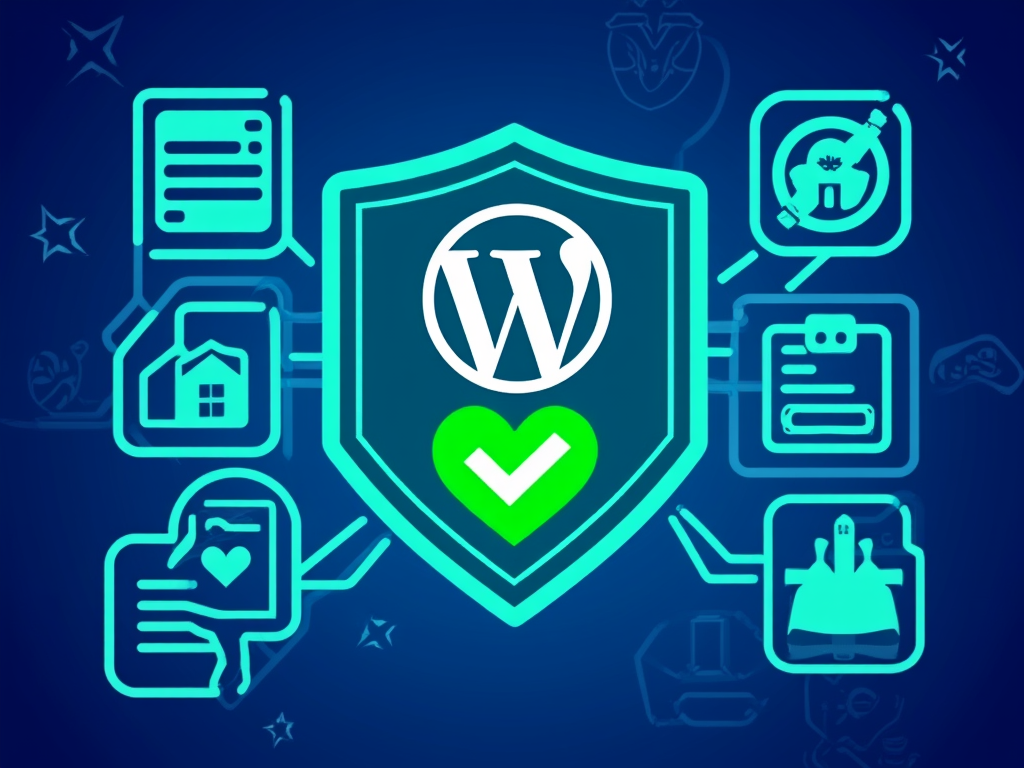WordPress and SEO: Boost Your Rankings
1. Introduction
When you think of building an online presence, it’s impossible to overlook the powerful duo: WordPress and SEO. Imagine standing in a crowded marketplace, and you’re the one shouting your unique message. WordPress, with its extensive capabilities, allows you to carve out your niche. But without honing in on SEO, your message might echo unheard in the vastness of the digital realm.
Did you know that WordPress powers more than 40% of all websites? That’s a staggering number, and it underlines the importance of mastering the nuances of WordPress SEO. In an era where search engine rankings can make or break your online visibility, ensuring your site is optimized is not just a task; it’s a necessity.
This guide delves into the essential strategies, tools, and best practices that can elevate your site's performance, help you claim visibility, and connect you to your audience in ways you’ve only dreamed of.
2. Essential WordPress SEO Best Practices
Navigating the world of WordPress SEO can feel like decoding a complex puzzle. It’s a blend of the technical, the creative, and the analytical. Let’s shine a light on the key aspects that can significantly impact your site's visibility and performance.
2.1 Choose an SEO-Optimized Theme
The backbone of your website's SEO lies in the choice of your theme. An SEO-optimized theme not only looks good but enhances performance, affecting how search engines crawl and index your site. Look for a theme that embodies the following:
- Mobile-responsive: In 2025, mobile users are predominant. Your theme should adapt effortlessly across devices.
- Lightweight and fast: Site speed is evergreen in SEO. A slow website can lead to higher bounce rates.
- Accessibility-ready: A compliant theme ensures your site is navigable for everyone, providing a better user experience.
2.2 Install an SEO Plugin
Let’s say you’re an artist in a crowded gallery. Without the right tools, your masterpieces might stay hidden. This is where plugins like Yoast SEO, Rank Math, and All in One SEO come into play. They function as your personal guides, facilitating:
- Real-time suggestions: As you write, these plugins provide feedback on how to optimize your content for search engines.
- Refining meta descriptions and titles: Crafting compelling titles is crucial— they are your first impression!
- Adhering to SEO best practices: Ensuring your posts meet current SEO standards without requiring an engineering degree.
2.3 Optimize Your Content
In SEO, content is not just king; it’s the entire kingdom! Your blog is the castle, and every post should serve as a vital pillar. A few key strategies include:
- Natural Keyword Placement: Introduce main keywords within the first 100 words of your content to signal your topic to search engines.
- Utilize Related Keywords: Sprinkle in related or LSI keywords throughout your text—think of them as breadcrumbs that guide readers to your content.
- Descriptive Image Filenames: Rename images; instead of `image123.jpg`, use `wordpress-seo-guide.png`. It’s a small change, but it signals intent to search engines.
- Alt Text for Images: Think of your alt text as eyes for your images—accurately describing visuals while incorporating your main keywords.
2.4 Improve Site Speed and Mobile Usability
Imagine entering a store, and the service is painfully slow. Frustrating, right? The same goes for websites. User experience hinges on speed and usability. Here’s how to optimize these aspects:
- Utilize a Caching Plugin: By caching your pages, you reduce load times significantly. Think of it as storing goods for a time when demand spikes!
- Optimize Images: Install plugins like Imagify to reduce file sizes without losing quality.
- Minify Code: By compressing code, you make your website lighter and faster.
- Enable Lazy Loading: This technique loads images and content only as the user scrolls—saving bandwidth and improving initial load times.
2.5 Secure Your Website with SSL
In today's digital age, security is paramount. Installing an SSL certificate transforms your URL from HTTP to HTTPS, signaling to users and search engines alike that their data is safe. Google prioritizes secure sites. So not only is it smart for protection, but it can also give you an edge in ranking!
2.6 Use SEO-Friendly URLs
Your URLs should be like signposts leading visitors down the path to your content. Clarity is key. A URL like yourdomain.com/wordpress-seo-tips tells users (and search engines) exactly what to expect, whereas yourdomain.com/post-123 leaves too much to the imagination.
2.7 Integrate with Google Search Console
Think of Google Search Console as a report card for your website. Setting it up allows you to monitor performance, discover indexing issues, and gain valuable insights that can steer your optimization efforts.
2.8 Implement XML Sitemaps
XML sitemaps are like treasure maps for search engines. They guide search bots through your content efficiently, ensuring nothing gets overlooked. Most SEO plugins offer a feature to generate and submit these sitemaps automatically.
3. Engaging with Advanced Strategies and Tools
As we delve deeper into the intricate world of WordPress SEO, a few advanced strategies warrant your attention. This isn’t merely about checking off a box; it’s about crafting a comprehensive approach that weaves SEO into the fabric of your site's content and architecture.
Stay tuned for insights that will unveil powerful techniques, ensure your optimization tactics remain fresh, and breathe new life into your WordPress endeavors!
FINDDOMAIN.GE (Internet services LLC) is a very interesting and rapidly developing IT company. The main directions are: web development, domain and web hosting. It also offers clients sub-services and outsourcing related to the main services.
BEST OFFERS:
Do you want to create your own company website or create your own online business on the Internet?
– WEB HOSTING
– DOMAIN REGISTRATION
– WEB DEVELOPMENT
– SITE BUILDER



Engaging with Advanced Strategies and Tools
Optimizing your WordPress site involves more than just applying basic practices; it’s about embracing advanced strategies that elevate your SEO game to the next level. These tactics not only enhance your visibility but also contribute significantly to building a loyal audience. Let’s delve into some methods that are sure to sharpen your competitive edge.
1. Keyword Research
Effective keyword research is the foundation of any successful SEO strategy. Think of it as a treasure hunt: the more time you spend figuring out where to dig, the more gold you’re likely to find. Utilize tools like Google Keyword Planner, Ahrefs, and SEMrush to uncover high-volume, low-competition keywords that resonate with your audience.
- Focus on long-tail keywords: These are phrases that are usually three or more words long and target niche markets. For example, instead of just “WordPress,” you might target “best plugins for WordPress SEO.”
- Analyze search intent: Understand what users are actually looking for. Are they seeking information, looking to purchase, or comparing options? Aligning your content with their intent enhances engagement.
2. Content Quality
Once you have your keywords, the real artistry begins—crafting quality content. This is where your unique voice shines. Great content engages, informs, and beckons the reader to explore more. To create compelling pieces:
- Consistency is key: Set a posting schedule and stick to it. Regular updates signal search engines about the freshness of your content.
- Address your audience’s needs: Solve their problems or answer their questions. Content that provides genuine value fosters trust and encourages sharing.
- Incorporate multimedia: Use videos, infographics, and images to make your posts visually appealing and engaging. Visual elements can break up text and keep readers captivated.
3. On-Page SEO
On-page SEO is critical for ensuring that search engines understand your content. It includes optimizing titles, meta descriptions, headers, and images.
- Unique SEO titles: Craft distinct titles for each post that encapsulate your content while incorporating your main keyword.
- Meta descriptions: Create enticing descriptions to increase click-through rates. These snippets guide potential visitors on what’s inside before they even click.
- Header tags: Organize your content using H2 and H3 tags. Not only do headers improve readability, but they also enhance user experience.
4. Backlinks and Domain Authority
Earning quality backlinks can dramatically improve your site’s credibility. Think of backlinks as votes of confidence from other sites. You want valuable endorsements from trustworthy sources.
- Guest blogging: Write articles for reputable sites in your niche and include links back to your site. This not only boosts domain authority but exposes you to new audiences.
- Engage with influencers: Build relationships with those in your industry. An endorsement from an influencer can open up new visitors to your site.
- Utilize directories: Submit your website to relevant directories. When done correctly, this can provide valuable links and increase visibility.
5. Structured Data and Schema Markup
Schema markup allows search engines to understand your content better and can improve your chances of appearing in rich snippets. Implement structured data on your site to give search engines explicit information regarding your content.
- Enhanced visibility: Use schema to mark up articles, products, and even FAQs. This extra layer of information can improve click-through rates.
- Automation tools: Consider using tools like Schema.org or plugins to help manage structured data implementation easily.
6. Regular Updates and Maintenance
Even the best-optimized sites need a little TLC. Regular updates ensure your content remains relevant and functional.
- Check for broken links: Regularly audit your links and fix any that lead to a 404 page. Keeping your website navigable is crucial for user experience and SEO.
- Update and consolidate content: If you have multiple posts covering similar topics, consider merging them into a comprehensive guide. It boosts authority and minimizes content duplication.
7. Analytics and Monitoring
Continuous monitoring is essential. Utilize tools like Google Analytics and MonsterInsights to gather insights about your website’s performance.
- Track user behavior: Understanding how visitors interact with your site helps pinpoint areas for improvement.
- Adjust your strategy: Based on performance data, tweak your content and SEO efforts to enhance results continually.
Conclusion
Navigating the landscape of WordPress SEO requires commitment and a keen eye for detail. From choosing the right theme to crafting high-quality content and earning backlinks, each step impacts your site's visibility and effectiveness.
As you embark on this journey, remember that SEO is never a one-time task. It's an ongoing process, where maintaining a balance between user experience and optimization will yield the best results. Your diligence and adaptability will ultimately dictate your success in the crowded digital marketplace.
Relevant Video Links:
- WordPress SEO Tutorial – 2025
- Advanced SEO Techniques for WordPress
- Understanding Google Search Console
FINDDOMAIN.GE (Internet services LLC) is a very interesting and rapidly developing IT company. The main directions are: web development, domain and web hosting. It also offers clients sub-services and outsourcing related to the main services.
BEST OFFERS:
Do you want to create your own company website or create your own online business on the Internet?
– WEB HOSTING
– DOMAIN REGISTRATION
– WEB DEVELOPMENT
– SITE BUILDER








